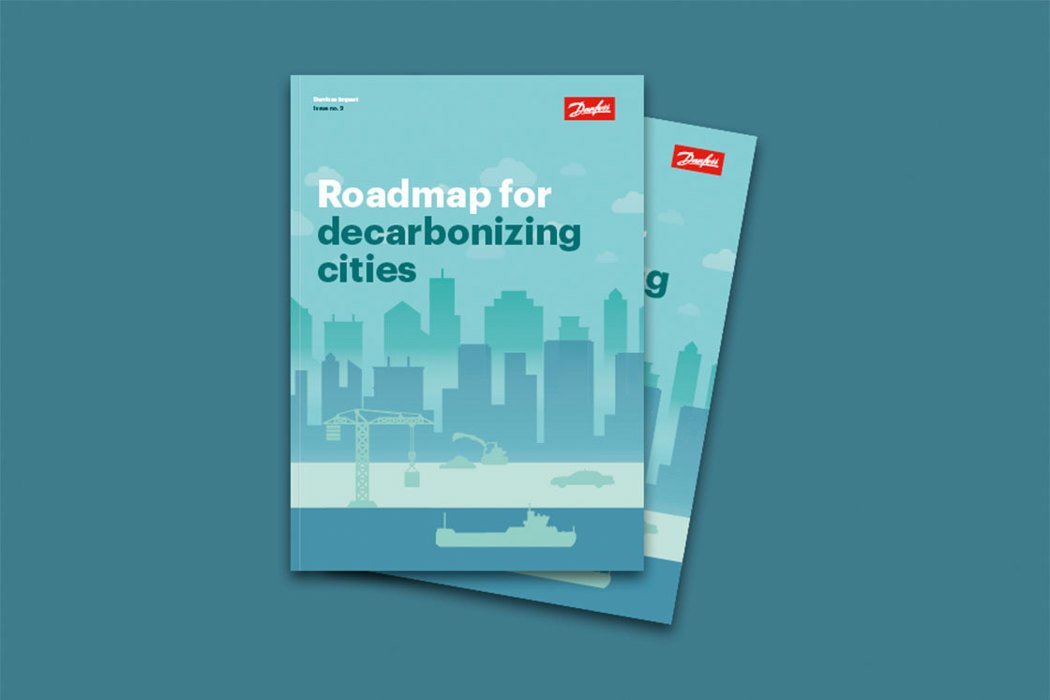Company releases whitepaper that lays out a new roadmap for decarbonising cities and a pathway to enable green transition on a large scale
NORDBORG, Denmark, 31 July 2023: Danfoss has released a whitepaper titled Roadmap for decarbonising cities. Making the announcement through a Press release, Danfoss said the whitepaper lays out a new roadmap for decarbonising cities and a pathway to enable green transition on a large scale. According to Danfoss, the whitepaper underlines how existing energy efficiency and electrification measures across sectors can immediately reduce emissions and accelerate a green transition in cities. Danfoss further said the whitepaper draws upon a diverse range of verified sources, including the latest data from the International Energy Agency (IEA), to demonstrate why action is needed and to underline how that action can be taken with solutions that are already available.
Commenting on the occasion of the release of the whitepaper, Kim Fausing, President and CEO, Danfoss, said: “We will not reach the goals of the Paris Agreement without deep decarbonisation of cities. The good news is that cities offer some of the best possibilities to optimise urban planning and accelerate a green transition. Moreover, there are already accessible, cost-efficient technologies capable of cutting emissions sufficiently to meet global climate goals. These technologies are already in use daily, for instance, in the city of Sønderborg in southern Denmark (Project Zero), but they must be adopted more widely globally now.”
 According to the latest data, Danfoss said, cities account for 70% of global carbon emissions, and ultimately, the battle against climate change will be won or lost in the cities. The company further said urgent action is needed to make changes to enable large-scale decarbonisation. According to Danfoss, as the world’s population continues its surge towards 10 billion people by 2050, it is now expected that almost 70% of the world’s inhabitants will be city dwellers by this date. In their current form, Danfoss said, with energy demand continuing to grow, cities would produce a wholly unsustainable level of emissions completely incompatible with key climate targets, such as the 1.5 degrees C target set out by the 2015 Paris Agreement.
According to the latest data, Danfoss said, cities account for 70% of global carbon emissions, and ultimately, the battle against climate change will be won or lost in the cities. The company further said urgent action is needed to make changes to enable large-scale decarbonisation. According to Danfoss, as the world’s population continues its surge towards 10 billion people by 2050, it is now expected that almost 70% of the world’s inhabitants will be city dwellers by this date. In their current form, Danfoss said, with energy demand continuing to grow, cities would produce a wholly unsustainable level of emissions completely incompatible with key climate targets, such as the 1.5 degrees C target set out by the 2015 Paris Agreement.
Ziad Al-Bawaliz, Regional President, Danfoss Turkey, Middle East and Africa, said: “Danfoss’ most recent whitepaper serves as a comprehensive guide for decarbonising cities, emphasising the pivotal role existing technologies can play in bridging a significant portion of the gap in urban greenhouse gas emissions, aligning with a 1.5 degrees C trajectory. Through practical insights and solutions, this whitepaper also paves the way for cities across our region to spearhead the transition towards a sustainable and environmentally friendly future, aligned with their ambitious decarbonisation goals.”
According to Danfoss, some of the key takeaways of whitepaper are:
Danfoss said the whitepaper would offer a concrete roadmap for mayors, local decision-makers and urban planners on how to eliminate all major drivers of cities’ carbon footprints. The company said that the paper also explores how available technologies can enhance the livelihoods of citizens, create more resilient economies, and generate job opportunities simultaneously. The company further said that it provides a holistic and concrete perspective on the significant opportunities for decarbonising cities. The full version of the whitepaper is available for download here.
Copyright © 2006-2025 - CPI Industry. All rights reserved.